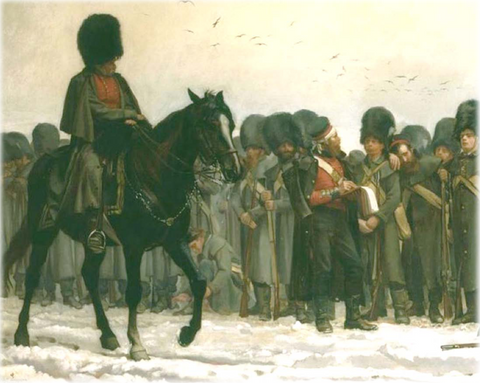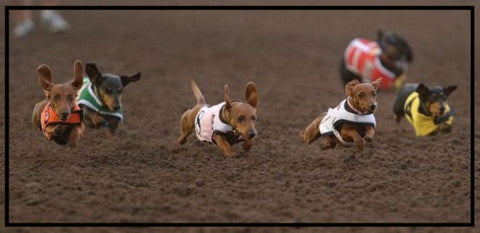
One of my favorite tools to use in a game design is the feedback loop. While it's something that's featured in several of my designs, Blood in the Fog is probably the one that illustrates it best. The Russian Player has certain advantages while the dense fog neuters the range of the powerful enemy rifles. This fog remains in place until a Fog Chit is drawn from the Russian cup, at which point it starts to gradually lift. Every time the Fog Chit is drawn, the number of Activations per turn - the number of chits drawn - increases, which in turn increases the probability that the Fog Chit will be drawn, which increases the number of Activations, which increases the probability, and so-on. The game might go several turns before the fog lifts, but once it does, the advantage rapidly shifts away from the Russian Player and toward their opponent. The more something happens, the more likely it is that it's going to happen - that's my feedback loop in a nutshell.
One obvious advantage to utilizing these sorts of loops is that it can impart a sense of momentum and organic narrative to the proceedings. Most wargames endeavor to tell some kind of story - to capture, with varying degrees of granularity, what happened when and where and, perhaps most importantly of all, why and how. Some wargames engage with this on a superficial level - from turn 12 on, this side gets a +1 Column Shift - but in better and more interesting games, the why and how should be folded into the game's mechanisms. Wargames often impart their meaning on a systemic level, and so I think it makes sense to answer the game's central questions - why and how did this happen the way it did? - through the game's systems. Feedback loops can do this with minimum effort.
In something like Blood in the Fog, the players don't exert any control over the feedback loop, which makes sense, given that a natural phenomenon is being modeled. The players have no agency over the shift in advantage from one side to the other - they can only control what they do when they have the advantage and when they don't. But loops work just as well in situations where the players can directly influence them. In fact, I think they work better in those situations - at the very least, the games become more interesting.
So, let's say that through their actions the players are able to generate a momentum, a narrative, a systemic situation that will continuously favor them and disfavor their opponent, and that, in the spirit of the more something happens, the more likely it's going to happen, this system will calcify and become irreversible given enough time. If that's the case, then the players have real agency, and their decisions have real consequences. It can create an onus on each player to keep the other in check, and yes, yes, here's our old friend Deadlock again, once more making a visit to these blog articles, giving me yet another chance to blather on about the brittle design aesthetic that I've become increasingly fascinated by. But rather than rehash all that - hey, I need something to write about later this month - I'm going to focus on ways in which one might construct these sorts of feedback loops. Practical advice, for the win!

One of the easiest ways to do this is to utilize cumulative turn-by-turn scoring. In Optimates et Populares and its forthcoming spiritual successor, This Guilty Land, players score Victory Points at the end of each game turn, mostly for legislative accomplishments. If I'm the red player and I've managed to move a law maker to its red 1 VP space, I haven't just scored 1 VP, but I'm going to keep scoring 1 VP every turn. Let's say that I score 3 VP each turn and you score only 1VP. If that trend continues - if you let that trend continue - then a couple turns later, I'm ahead by six points, then eight, then ten. Obviously you don't want that trend to continue!
Cumulative scoring is a simple but effective way to create a sort of feedback loop. It doesn't necessarily make the game easier for me and harder for you on a systemic level, other than the fact that the escalating difference in VP of necessity makes the game easier for me and harder for you. But it's not like I've unlocked some new ability that makes it easier for me to protect my gains. You will however see this in economics games. Players tend to get income every turn, and discrepancy in income levels between players and/or companies will widen over time. If I have more cash, I can do more with it, usually resulting in widening the income gap even further. In the 18XX, I might be able to push new trains faster than you're able to keep up. The rich get richer, the poor get poorer.
And while the groggier grogs in my readership might roll their eyes at this detour into oh-so-hip-and-trendy train games, there's an important lesson there that's applicable to building feedback loops into historical wargame designs: reward success. In the 18XX, it's usually the companies that have the highest income that go first in a turn. That gives them access to more opportunities, and the ability to deny juicy builds and tokens for companies that operate later in the turn. The people who are ahead are rewarded for being ahead, which generally helps them to stay ahead: feedback loop. This maps pretty well to how commanders and whole nations at war will often have a sort of a hot streak, moving from strength-to-strength.

The eurogamers in my audience might think this sounds suspiciously like the "runaway leader" problem. Long considered the scourge of game balance, it is the face that launched a thousand reverse turn-order mechanisms. And, you know, their suspicions are wholly warranted and confirmed: player-driven feedback loops, by their very nature, are designed to create runaway leaders and blowouts. Such games aren't interested in helping players catch up should they fall behind. If players are of unequal skill then the game won't be close or even remotely "fair". Nor is it meant to be.
I'm not saying that one type of game is necessarily "better" than the other. I have my preference of course, and it's pretty easy to guess what that is, but I'm also a person who designs games that don't concern themselves with wider and traditional distribution methods. One of the pitfalls of feedback loops is that they are by definition a sort of willful distortion of a game's equilibrium. That widens the decision space and the possibilities, but it narrows a game's commercial appeal and accessibility.

1 comment
Great blog Tom. Never thought about feedback loops being used in games before. I never really liked the “from turn 12 on, this side gets a +1 Column Shift” approach in games because it means you can plan specifically for the event to happen rather than plan for it likely happening, which is a subtle but important difference.
Lance